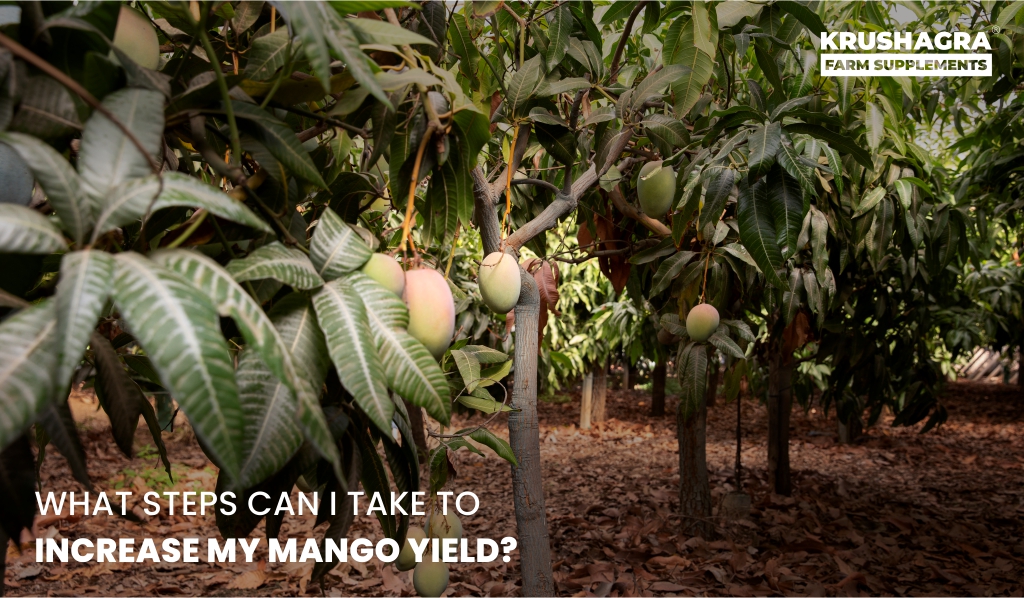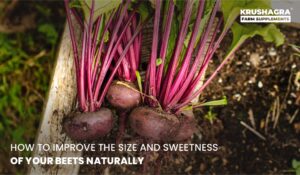Maximizing mango yield is a goal for many growers, especially given the growing global demand. Achieving this requires a combination of scientific techniques, good agricultural practices, and an understanding of the specific needs of mango trees.
Let’s explore actionable steps you can take to significantly boost your mango yield.
1. Selecting the Right Mango Variety
Choosing the appropriate mango variety is the first and one of the most crucial steps in ensuring a high yield.
Different varieties thrive in different climatic conditions, and each has unique soil and care requirements. Making an informed choice at the outset can set the stage for a successful harvest.
Steps to Take:
- Research Climatic Compatibility: Ensure that the variety you choose is suited to your region’s climate. For instance, Alphonso grows well in coastal areas, while Dasheri thrives in northern regions.
- Consider Market Demand: Opt for a variety that has high demand in your target market to maximize profitability.
- Opt for High-Yield Varieties: Varieties like Kesar, Tommy Atkins, and Haden are known for their high productivity.
2. Soil Preparation and Management
Healthy soil is the foundation of any successful agricultural endeavor. Mango trees require well-drained, nutrient-rich soil to grow and bear fruit abundantly.
Proper soil preparation can significantly influence the quality and quantity of your yield.
Steps to Take:
- Test Soil Fertility: Conduct a soil test to determine nutrient levels and pH. Mango trees prefer slightly acidic to neutral soil (pH 5.5-7.5).
- Amend Soil Accordingly: Add organic matter, such as compost or well-rotted manure, to improve soil structure and fertility.
- Ensure Proper Drainage: Avoid waterlogging by creating raised beds or planting on slopes where necessary.
3. Optimizing Irrigation Practices
Water management plays a critical role in the health and productivity of mango trees. While mangoes are relatively drought-tolerant, proper irrigation is essential during key growth phases.
Steps to Take:
- Establish a Schedule: Water young trees regularly, but reduce frequency as they mature to avoid overwatering.
- Focus on Critical Phases: Irrigate during flowering and fruit development stages for better yields.
- Use Efficient Systems: Consider drip irrigation for precise water delivery and to conserve water.
4. Pruning and Canopy Management
Pruning is an often-overlooked practice that can significantly impact mango yield. Proper pruning ensures better air circulation, sunlight penetration, and reduces the risk of pests and diseases.
Steps to Take:
- Remove Dead or Diseased Branches: Regularly cut away deadwood to encourage healthy growth.
- Shape the Canopy: Maintain an open canopy to allow sunlight to reach all parts of the tree.
- Control Tree Height: Keep trees manageable in height for easier harvesting and better resource allocation.
5. Nutrient Management
Mango trees require a balanced supply of nutrients for optimal growth and fruiting. A lack of essential nutrients can lead to poor flowering, fruit drop, and low yields.
Steps to Take:
- Apply Fertilizers: Use nitrogen (N) for vegetative growth, phosphorus (P) for root development, and potassium (K) for fruit quality.
- Incorporate Micronutrients: Elements like zinc, boron, and magnesium are crucial for mango trees.
- Adopt Organic Practices: Consider using biofertilizers and organic compost to enhance soil health sustainably.
6. Pollination Enhancement
Pollination is a critical factor in fruit production. While mango trees are primarily pollinated by insects, you can take steps to boost pollination rates and, consequently, your yield.
Steps to Take:
- Encourage Pollinator Activity: Plant flowering plants near mango orchards to attract bees and other pollinators.
- Avoid Pesticide Overuse: Excessive pesticide application can harm beneficial insects. Using biofertizilers prevents this from happening.
- Hand Pollination: In small orchards, manually transferring pollen can improve fruit set rates.
7. Pest and Disease Management
Pests and diseases can wreak havoc on mango orchards, drastically reducing yield. Implementing a robust pest and disease management plan is vital for healthy trees.
Steps to Take:
- Monitor Regularly: Inspect trees frequently for signs of pests like mango hoppers, fruit flies, and mealybugs.
- Use Integrated Pest Management (IPM): Combine biological, cultural, and chemical control methods for effective pest management.
- Prevent Fungal Diseases: Use fungicides and ensure proper air circulation to reduce the risk of anthracnose and powdery mildew.
8. Flower and Fruit Thinning
Thinning flowers and fruits might seem counterintuitive, but it’s an effective way to improve fruit quality and size. Overcrowding can stress the tree and lead to smaller, less marketable mangoes.
Steps to Take:
- Remove Excess Flowers: Thin out flowers early to direct the tree’s energy to fewer fruits.
- Eliminate Weak Fruits: Remove undersized or damaged fruits during the early stages of development.
- Maintain Balance: Aim for an optimal load that the tree can support without compromising fruit quality.
9. Post-Harvest Care and Pruning
Post-harvest care sets the tone for the next growing season. Proper pruning and maintenance after harvesting can rejuvenate mango trees and prepare them for the next cycle.
Steps to Take:
- Prune After Harvest: Remove old and unproductive branches to stimulate new growth.
- Fertilize Appropriately: Replenish nutrients to recover from the stress of fruit production.
- Monitor Tree Health: Address any signs of pest or disease infestations promptly.
10. Leveraging Technology and Research
Modern technology and ongoing agricultural research offer new tools and techniques to improve mango yield. Staying informed and adopting these innovations can give you a competitive edge.
Steps to Take:
- Use Growth Regulators: Apply plant growth regulators like gibberellic acid to improve flowering and fruit set.
- Adopt Precision Agriculture: Use tools like soil moisture sensors and drones for better orchard management.
- Stay Updated: Attend agricultural seminars and workshops to learn about the latest practices and innovations.
Final Thoughts
Increasing mango yield is a multifaceted endeavor that requires careful planning, consistent effort, and a willingness to adapt to new methods.
By focusing on variety selection, soil health, water management, pruning, and pest control, you can create an environment where mango trees thrive. Incorporating modern technology and sustainable practices will further enhance your results. With the right approach, you can not only increase your mango yield but also improve the quality and profitability of your harvest.
FAQ’s
1. What is the best time to plant mango trees?
The ideal time to plant mango trees is during the monsoon season, as the natural rainfall supports their initial growth.
2. How long does it take for a mango tree to bear fruit?
Mango trees typically begin bearing fruit within 3 to 5 years, depending on the variety and growing conditions.
3. Can mango trees grow in sandy soil?
Yes, mango trees can grow in sandy soil, provided it is well-drained and supplemented with organic matter for improved fertility.
4. How often should mango trees be fertilized?
Fertilize mango trees 2-3 times a year, focusing on pre-flowering, fruit development, and post-harvest periods.
5. What are common pests that affect mango trees?
Common pests include mango hoppers, fruit flies, mealybugs, and stem borers. Regular monitoring and integrated pest management can help control these pests.





